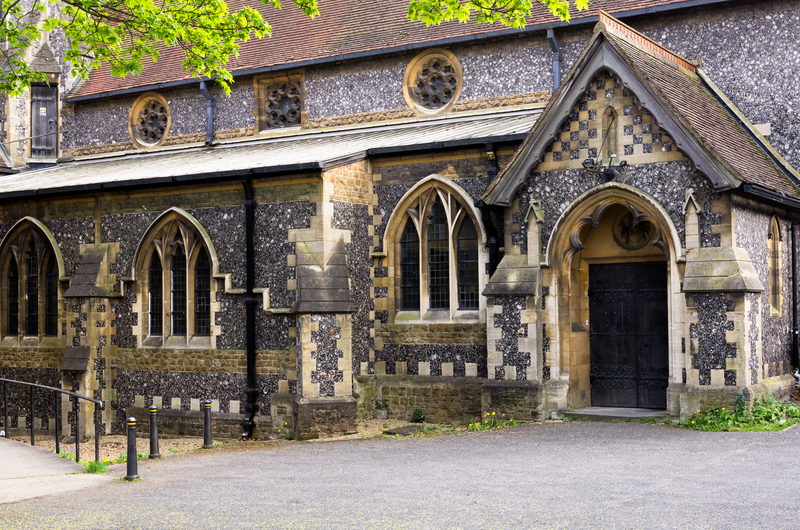Decoding the Challenges of Piano Moving: Leave It to the Specialists
Posted on 28/05/2025
Decoding the Challenges of Piano Moving: Leave It to the Specialists
Piano moving can appear deceptively simple at first glance--a large instrument, some strong hands, perhaps a dolly, and a moving van. However, the reality of relocating a piano is far more complex than most people anticipate. With its delicate internal mechanisms, hefty weight, and sentimental (or monetary) value, moving a piano is a task ripe with challenges and risks. This article explores the intricacies of piano transport, the dangers of DIY piano moving, the benefits of hiring specialists, and practical tips for ensuring your instrument arrives at its new home in perfect condition.

Understanding the Complexity of Pianos
Pianos are remarkable instruments. Beyond their ability to produce beautiful music, they possess a complexity that poses significant hurdles during the moving process.
The Anatomy of a Piano
- Grand Pianos: These majestic instruments can weigh anywhere from 500 to 1,200 pounds. Their broad shape and protruding legs make navigating doorways and stairwells exceptionally challenging.
- Upright Pianos: Though more compact at first glance, these can still weigh between 300 and 800 pounds, with inner mechanisms that are just as intricate.
- Digital Pianos: While generally lighter, high-end digital pianos may present their own moving difficulties due to size and sensitive electronics.
A single piano typically contains over 10,000 moving parts, delicately balanced to create harmonious tones. They also feature taut strings with tremendous tension--sometimes exceeding 20 tons in total. The wrong jolt or tip can send these parts out of alignment, resulting in costly repairs or irreparable damage.
Why Are Pianos So Difficult to Move?
- Weight Distribution: The bulk of a piano's weight is not evenly distributed, often concentrated in the cast-iron plate and soundboard. This makes balancing the instrument during a move extremely difficult.
- Fragile Components: Keys, pedals, and legs are all vulnerable to snapping or bending under improper handling.
- Size and Structure: Getting through narrow hallways, stairs, and sharp corners requires precision and, often, temporary disassembly.
- Environmental Sensitivity: Temperature and humidity fluctuations during the move can impact tuning and even permanently damage wood and leather components.
Deciphering the best way to move a piano truly requires skill, knowledge, and specialized tools.
The Hidden Dangers of DIY Piano Transport
Many homeowners attempt a DIY piano move to save money. However, inexperienced handling can lead to expensive, even tragic, consequences for both the piano and the movers themselves.
Risks to the Instrument
- Physical Damage: Scratches, dents, broken legs or pedals, and cracked soundboards can result from an inadvertent slip or bump.
- Internal Misalignment: The vibrations and jolts that happen with improper technique may knock strings and hammers out of place, ruining the instrument's sound.
- Loss of Value: Even minor aesthetic blemishes can significantly reduce a piano's value--especially for antique or high-end models.
Personal Safety Hazards
- Heavy Lifting Injuries: Back strains, crushed fingers, and other musculoskeletal injuries are common among amateur movers.
- Property Damage: Walls, staircases, railings, and flooring can all suffer along the way, leading to expensive home repairs.
- Risk of Drops: Without the proper harnesses or teamwork, a piano can tumble, putting everyone around at serious risk.
Insurance Dilemmas
Many homeowners or renters' insurance policies do not cover accidental damages to pianos during transit, leaving you financially liable for any mishaps.
Why Trust Piano Moving Specialists?
Piano moving professionals are not simply movers with a strap and a dolly. They are highly trained specialists equipped with specific tools, techniques, and experience tailored to the idiosyncrasies of these remarkable instruments.
What Makes Piano Movers Different?
- Specialized Equipment: Heavy-duty piano dollies, custom padding, ramps, skid boards, and hoists designed specifically for piano dimensions and weights.
- Knowledgeable Technicians: Expert assessments of the piano's structure, optimal angles for carrying, and the safest route out of the property.
- Teamwork & Coordination: Piano moving is never a solo job--it requires a coordinated team working in harmony for safe navigation through tricky environments.
- Rigorous Training: The best specialists undergo extensive training regarding piano anatomy, disassembly, packing, and security.
Professional Piano Movers: What Services Do They Offer?
- Local and Long-Distance Piano Moving: Whether you're moving across town or across the country, pros have the proper protocols for secure short and long transports.
- Expert Packing and Unpacking: Correct wrapping techniques shield the instrument from shocks and moisture.
- Disassembly and Reassembly: Grand pianos often require removal of legs, pedals, and lids for navigation and safe transit, which specialists perform without voiding warranties.
- Climate-Controlled Transport: Ideal for protecting particularly delicate or antique pianos from weather-induced damage during transit.
- Temporary Storage: Many movers offer climate-controlled storage if your new location isn't quite ready for delivery.
Entrusting your piano to experts not only preserves its function and aesthetic--it also grants peace of mind, knowing that the instrument is safeguarded against mishaps and fully insured during the journey.
How Piano Movers Overcome Common Challenges
Learning to decode the challenges of piano moving is all about preparation, precaution, and professional care. Here are some real-world scenarios specialists encounter and how they handle them:
Navigating Tight Spaces
- Measuring Doorways, Hallways, and Elevators: Before the move, professionals meticulously measure all passages to plan the safest route.
- Disassembly: Where passageways are especially narrow, skilled movers carefully remove and later reinstall parts like legs, lyre, or lid.
- Pivot Techniques: Utilizing advanced lifting and pivot strategies to maneuver pianos through complex angles without damage.
Multi-Story Moves
- Staircase Navigation: Movers use special ramps, harnesses, and even cranes if needed to lift pianos up or down multiple stories safely.
- Elevator Limitations: When elevators are too small or cannot bear the piano's weight, pros have mechanical alternatives for vertical transport.
Protecting the Piano's Finish
- Custom Padding: Every exposed surface is wrapped with thick, non-abrasive padding.
- Moisture Protection: Waterproof wraps prevent weather-related damage during outdoor moves or inclement weather conditions.
Securing During Transportation
- Strapping and Stabilizing: Pianos are securely strapped to the walls or floors of moving vehicles to prevent shifting on the road.
- Climate Controls: Vehicles equipped with temperature and humidity controls help maintain perfect conditions for sensitive wooden and felt components.
How to Prepare For a Piano Move
Even when you hire specialized piano movers, your preparation matters. Follow these steps to make the process as smooth as possible:
- Measure Paths: Ensure all routes--including hallways, stairs, doorways--are pre-measured to anticipate access issues.
- Identify Obstacles: Clear furniture, rugs, or decorations that might interfere with the moving team's path.
- Secure Pets and Children: For safety, keep the area free of small children or pets during the move.
- Provide Access: Reserve elevator time, parking spots, or loading dock access if necessary.
- Discuss Details: Share special information about the piano or property layout with your movers in advance.
Pro tip: After a move, always allow your piano to acclimate for at least a week before tuning, as vibrations and climate shifts may temporarily affect its pitch.
Key Questions to Ask Your Piano Movers
When hiring a piano moving company, consider these critical questions to ensure you're working with true specialists:
- Do you have specific experience with my type of piano? Not all movers handle grand pianos, upright pianos, or organs equally well.
- Are you fully insured? Confirm both liability insurance and cargo coverage in case of accidental damage.
- Can you provide references? Reputable companies should have satisfied clients willing to vouch for their services.
- What is your process for difficult moves? Ask about staircases, narrow doorways, or unusual property layouts.
- Do you offer climate-controlled storage or transportation? Especially important for high-value, antique, or concert-quality pianos.

The Value of Peace of Mind: Why Leaving Piano Moving to Experts Matters
Pianos are more than furniture. Each instrument carries stories--family memories, artistic expression, craftsmanship spanning generations. A mishap during an unprofessional move can erase years of enjoyment or artistry in seconds. By engaging professional piano transport specialists, you:
- Prevent damage to delicate parts and finishes
- Reduce risk of injury to yourself and others
- Protect your investment with insurance and expert handling
- Enjoy complete peace of mind knowing your beloved instrument is in the best of hands
Conclusion: Trust the Specialists for Piano Moving Success
Decoding the challenges of piano moving reveals a world of hidden hazards, technical expertise, and the necessity for professional care. Attempting to move a piano without the right skills or equipment risks harm to both the instrument and the people involved. Certified piano moving experts stand ready with specialized knowledge and equipment to ensure a smooth, safe, and stress-free transition--preserving not just the instrument's condition, but its ability to create music for generations to come.
Don't take chances with your treasured piano. When it's time to move, remember: Leave it to the specialists--and let your piano's story continue in new surroundings, safely and in perfect harmony.
